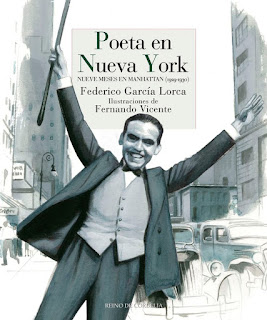Does Little Viennese Waltz have anything to do with Lorca’s depression and subsequent year-long pilgrimage to New york following a break-up with his lover, sculptor Emilio Aladren? When Lorca offers us “...this close-mouthed watz”, “this broken-waisted waltz”, “this waltz that dies in my arms”, “this ‘I will always love you’ waltz” and ends the poem with “my love, my love I will have to leave violin and grave, the waltzing ribbons”, is he bidding goodbye to the unfaithful Aladren? Who knows?
Perhaps Leonard Cohen knew. He named his daughter Lorca. He tells us that he discovered the poetry of Lorca at the age of 15 when, rummaging through a used bookstore in Montreal, he came upon a book of Lorca's poetry and experienced an epiphany which lead him to declare that he would become a poet in the style of Lorca.
But perhaps it’s not necessary to mine the lives of artists to discover the sources or the motivations that lead to their masterpieces. Perhaps it’s enough to be moved by the feelings aroused by beautiful art. Leonard Cohen’s Take this Waltz ends with this offering, “O my love, O my love, Take this waltz, take this waltz, it’s yours now. It’s all that there is.” Just a song, just a series of images, just a feeling. And perhaps that is good enough.

No comments:
Post a Comment